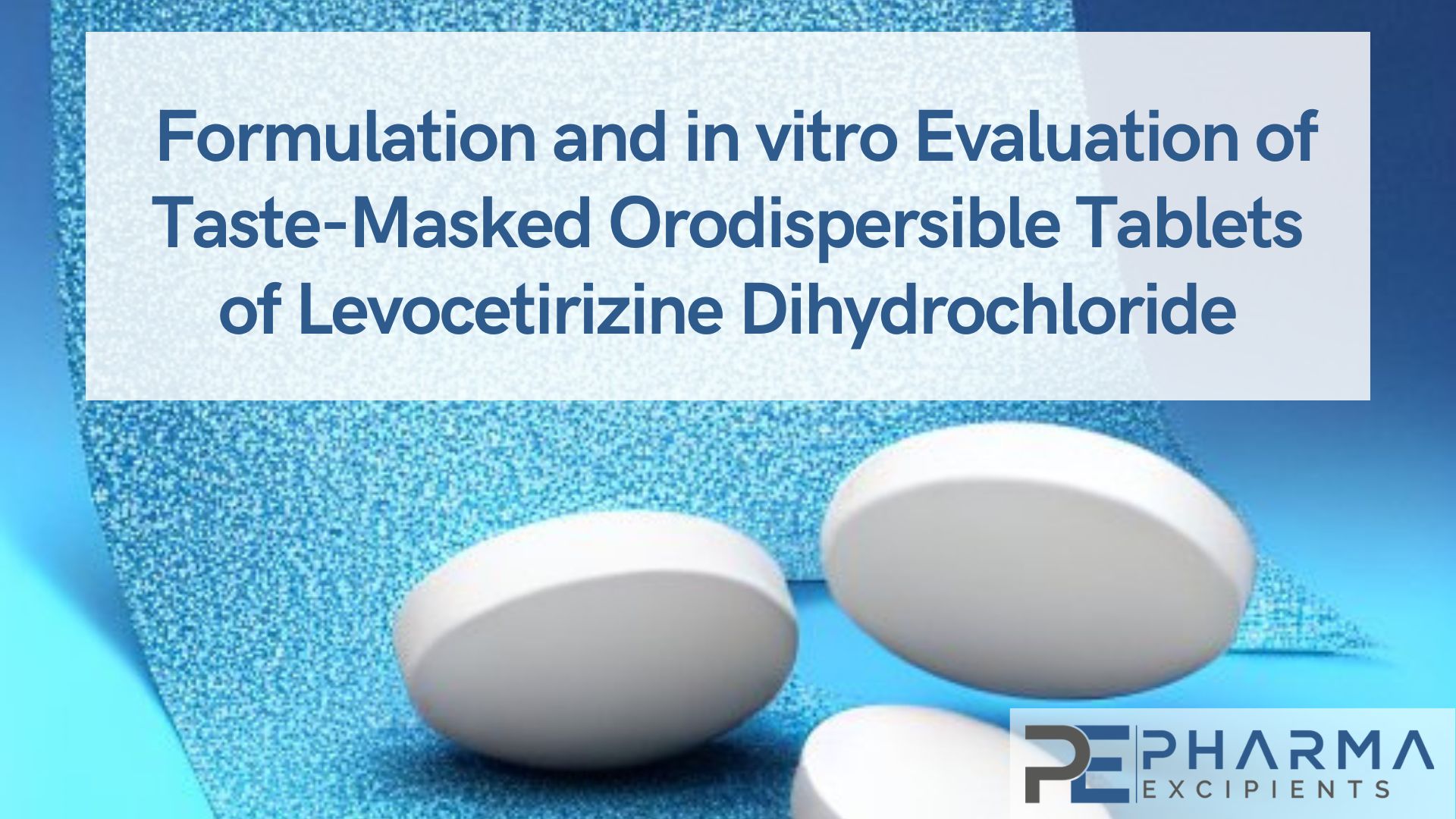Formulation and in vitro Evaluation of Taste-Masked Orodispersible Tablets of Levocetirizine Dihydrochloride

Abstract
The main aim was to formulate and evaluate and optimize taste- masked orodispersible tablets of Levocetirizine Dihydrochloride, a drug used in Allergic Rhinitis was prepared by direct compression method. The study involved different excipients which were used for the formulation and tested for their compatibility with Levocetirizine Dihydrochloride by the FT-IR studies. Based on the results of FT-IR studies, most of the excipients were found to be compatible with Levocetirizine which was used for the preparation of Levocetirizine oral disintegrating tablets. Levocetirizine Dihydrochloride is bitter in taste so the Tulsian-339 (ion exchange resin) was used to mask the taste to formulate an orodispersible dosage formulation using drug resin complex. Nine batches (F1-F9) of oro dispersible tablets of Levocetirizine Dihydrochloride were prepared by using super disintegrants like Sodium starch glycolate, Avicel PH102 and Low Hydroxy Propyl Cellulose in variable concentrations along with excipients for the development of optimized formulation. All formulations were subjected to evaluation studies of drug content, weight variation, water absorption ratio, wetting time, in vitro disintegration, dispersion time, hardness, friability and thickness uniformity. The tablets were disintegrated in vitro within 28-38 seconds, the complete drug was released from the tablets within 15 min. The results showed that Levocetirizine dihydrochloride was successfully formulated into an orodispersible dosage form.
Introduction
Recently pharmaceutical industry has become increasingly aware of the need for the elderly be considered as a separate and unique medicare population. Though geriatric patients constitute a minor proportion of the population, its growth rate is high and hence will have a significant impact on the development of drug delivery systems. An inability or unwillingness to swallow solid dosage forms such as tablets and the poor taste of medicines are some of the important reasons for consumer dissatisfaction. Levocetirizine is a selective, long-acting peripheral H1 receptor antagonist, used in the treatment of Allergic rhinitis.
Ion exchange resins are water insoluble, cross linked polymer containing salt forming groups in repeating position on the polymer chain. The unique advantages of Ion exchange resins for complexation are due to the fixed positively or negatively charged functional groups attached to water insoluble polymer backbones. These groups have an affinity for positively charged counter ions, thus absorbing the ions into the polymer matrix. Since most of the drugs possess ionic sites in their molecules, the resins charge provides to loosely bind such drugs. The binding is generally an equilibrium process, resulting in continuous desorption or elution of the drug from the resin as a drug is absorbed into the body. Ion exchange resins are high molecular weight water insoluble polymers and so are not absorbed by the body and therefore inert and safe for oral use. The complex of cationic drugs and weak ion exchange resin does not break at the pH of saliva which is 6-7 with cation concentration in the stomach and pH , free drug is immediately released. This implies that while passing through the mouth the drug remains in complex form, thereby imparting no bitter taste in the mouth.
This property was exploited to formulate consumer-friendly dosage forms i.e., oro dispersible tablets. These dosage forms are placed in the mouth and allowed to disperse in the saliva, to produce a suspension that can be easily swallowed by the patient. The advantage of this convenient administration has encouraged both academics and industries to generate new fast disintegrating formulations. Less frequently, they are designed to be absorbed through the buccal and esophageal mucosa as the saliva passes into the stomach. In the latter case, the bioavailability of a drug from fast dispersing formulations may be even greater than that observed for standard dosage forms. Lende et al. developed mouth desolving formulation of Astemizole using disintegrants such as Crosscarmellose, Crosspovidone and Indion 414 for antiallergic action. Likewise till now many attempts has been made for formulating oro dispersible tablets using Labetalol HCl, Croscarmellose sodium natural disintegrants, etc. each has their own advantages and disadvantages. These formulations become more popular when European Pharmacopoeia adopted the term “Oro dispersible Tablet” for the tablet to be placed in the mouth that disperses rapidly before swallowing.
The main objective of the study was to formulate taste masked oral dispersible tablets of Levocetirizine by direct compression technique and their evaluation. In the present work, an attempt was made to formulate taste masked Levocetirizine oro- dispersible tablet using different superdisintegrants (like Sodium starch glycolate, Avicel PH102 and Low Hydroxy Propyl Cellulose in variable concentrations by direct compression method. The fundamental principle used in the development of the fast-dissolving tablet is to enhance absorption and improve the bioavailability of the drug.
Read more here
Additional excipient used in the study: Cellactose
Puri Sumati, Dandagi P M, Patil Sunita, Gada S G. Formulation and in vitro Evaluation of Taste-Masked Orodispersible Tablets of Levocetirizine Dihydrochloride. Asian Journal of Pharmaceutical Research. 2023; 13(1):1-0. doi: 10.52711/2231-5691.2023.00001
Read more about ODT here


